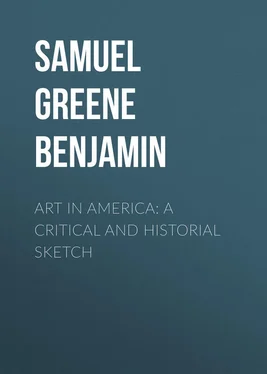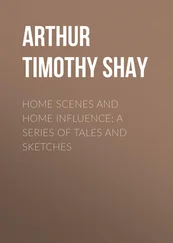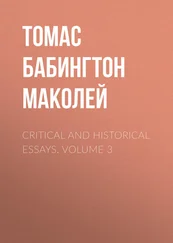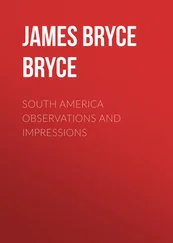Samuel Benjamin - Art in America - A Critical and Historial Sketch
Здесь есть возможность читать онлайн «Samuel Benjamin - Art in America - A Critical and Historial Sketch» — ознакомительный отрывок электронной книги совершенно бесплатно, а после прочтения отрывка купить полную версию. В некоторых случаях можно слушать аудио, скачать через торрент в формате fb2 и присутствует краткое содержание. Жанр: foreign_antique, foreign_prose, на английском языке. Описание произведения, (предисловие) а так же отзывы посетителей доступны на портале библиотеки ЛибКат.
- Название:Art in America: A Critical and Historial Sketch
- Автор:
- Жанр:
- Год:неизвестен
- ISBN:нет данных
- Рейтинг книги:4 / 5. Голосов: 1
-
Избранное:Добавить в избранное
- Отзывы:
-
Ваша оценка:
- 80
- 1
- 2
- 3
- 4
- 5
Art in America: A Critical and Historial Sketch: краткое содержание, описание и аннотация
Предлагаем к чтению аннотацию, описание, краткое содержание или предисловие (зависит от того, что написал сам автор книги «Art in America: A Critical and Historial Sketch»). Если вы не нашли необходимую информацию о книге — напишите в комментариях, мы постараемся отыскать её.
Art in America: A Critical and Historial Sketch — читать онлайн ознакомительный отрывок
Ниже представлен текст книги, разбитый по страницам. Система сохранения места последней прочитанной страницы, позволяет с удобством читать онлайн бесплатно книгу «Art in America: A Critical and Historial Sketch», без необходимости каждый раз заново искать на чём Вы остановились. Поставьте закладку, и сможете в любой момент перейти на страницу, на которой закончили чтение.
Интервал:
Закладка:
Thomas Sully was also a native of England, who came to this country in childhood, and lived to such a great age that it is difficult to realize that he was the contemporary of Trumbull and Stuart. Sully had great refinement of feeling, and reminds us sometimes of Sir Thomas Lawrence. This is shown in a certain favorite ideal head of a maiden which he reproduced in various compositions. One often recognizes it in his works. His portraits are also pleasing; but in the treatment of a masculine likeness the feebleness of his style and its lack of originality or strength are too often apparent. John Naegle, of Philadelphia, was a pupil of Sully, but first began his art career as apprentice to a coach-painter. Like many of our artists of that time, he tried his hand at a portrait of Washington; but he will be longest and best remembered by his vivid and characteristic painting of Patrick Lyon, the blacksmith, at his forge. This picture now hangs in the elegant gallery of the Philadelphia Academy of Fine Arts, where several of the masterpieces of our early painters may be seen hanging in company with it, among them West's "Christ Rejected," Vanderlyn's "Ariadne," and Allston's "Dead Man Restored to Life."
Born the year of the Declaration of Independence, John Vanderlyn, like most of the leading artists of this period of whom we are writing, lived to old age. His days were filled with hardships and vicissitudes: and, unless he has since become aware of the fame he left behind, he was one of many to whom life has been a very questionable boon.
Vanderlyn was a farmer's boy on the Hudson River. It was one of those curious incidents by which Destiny sometimes makes us think there may be, after all, something more than blind action in her ways, that Aaron Burr, passing by his father's house, saw some rude sketches of the rustic lad with that keen eye of his. Burr discerned in them signs of promise, and invited him to come to New York. When Vanderlyn arrived Burr treated him kindly. Eventually the painter made a portrait of Theodosia, the beautiful and ill-fated daughter of his benefactor; and when Burr was under a cloud and found himself destitute in Europe, it was Vanderlyn who received and gave him shelter.
Much of the art-life of this painter was passed at Rome and in Paris. His varied fortunes, and the constant adversity that baffled him at every step, obliged him to resort to many a pitiful shift to keep soul and body together. It is owing to this cause that he so rarely found opportunity to do justice to the undoubted ability he possessed.
But Vanderlyn left at least two important creations, marked by genuine artistic feeling and beauty, that will long entitle him to a favorable position among American painters. "Marius Among the Ruins of Carthage" I have never seen, and can only speak of it by report; but that it is a work deserving to rank high in the art of the time seems to be proven not only by the applause it received at Rome, but also by the fact that it carried off the gold medal at the Salon in Paris. Such is the irony of fate that the artist was twice forced to pawn this medal. The second time he was unable to redeem it.
The "Ariadne" has unfortunately begun to show signs of age, and the browns into which the flesh tints are painted are commencing to discolor the delicate grays. An oil-painting, if properly executed, should hold its qualities for a longer time; but unhappily the works of too many good artists are affected in the same way. The "Ariadne" is, however, a noble composition, quite in classic style; and if not strikingly original, is a most creditable work for the early art of a young people.
Newport, Rhode Island's charming little city by the sea, once a thriving commercial centre, but now a favorite resort of culture and gayety and wealth, but always opulent in delightful Colonial and Revolutionary associations, and doubly attractive for the artistic memories that cling to it, and the treasures of our art which it contains – this was the birth-place of Edward G. Malbone, who, after a successful art-life in his native town and at Charleston, died at Newport, in 1807, at the early age of thirty-two. Miniature-painting was a favorite pursuit of our early artists. Some of our best portraits have been done by that means; but among all who have followed it in the United States none have excelled Malbone, although some, like John Fraser, of South Carolina, have been very clever at it. He succeeded in giving character to his faces to a degree unusual in miniature; while the coloring was rendered at once with remarkable delicacy, purity, and fidelity. His best works are probably the likeness of Ray Green, and the exquisitely beautiful group called the "Hours," which is carefully preserved in the Athenæum at Providence.
With the general public the name of no American artist of that time is probably more widely known than that of Washington Allston. He owes this in part, doubtless, to the fact that as a writer he also became identified with the literary circle at that time prominent in Eastern Massachusetts. He was born in 1779, at Waccamaw, South Carolina. Sent at seven years of age to Newport, both for health and instruction, he lived there ten years; and very likely associated with Malbone, and perhaps met Stuart there.
Subsequently Allston visited Italy, and then settled in London, where his talents received such ample recognition as to gain him the position of Academician. The mistake of his art-life – although it was perhaps advantageous to his fame at home – was probably his return to the United States while yet in his prime. The absence of influences encouraging to art growth, and of that sympathy and patronage so essential to a sensitive nature like that of Allston's, had a blighting effect on his faculties; and the many years he passed in Boston were years of aspiration rather than achievement. Allston has suffered from two causes. Overrated as an artist in his day, his reputation is now endangered from a tendency to award him less than justice. The latter may be due in part to the fact that Allston himself adopted a course of action that tended to repress rather than develop his art powers. In his desire to give intellectual and moral value and permanent dignity to his productions, and in his aversion to sensationalism in art, he treated his subjects with a deliberate severity which takes away from them all the feeling of spontaneity which is so delightful and important in works of the imagination. If his genius had been of the high order claimed by some, such a result would have been impossible. The emotional element would have sometimes asserted itself, and given to his finished works that warmth and attraction the lack of which, while they are intellectually interesting and worthy of great respect, prevents them from inspiring and winning our hearts, and has impaired the influence they might have had in advancing the progress of art in America.
That Allston might have produced paintings of more absolute power, seems evident from his numerous crayon sketches and studies for paintings, which are full of fire, energy, and beauty, delicate fancy, and creative power. One cannot wholly understand Allston's ability until he has seen those studies; and it cannot be too much regretted that he did not allow a freer rein to his brush when composing the works upon which he desired to establish his fame. When he did so far forget himself, we get a glimpse of the fervor and grandeur of the imagination that burned in that brain, whose thoughts were greater than its capacity for expression. It must also be granted that the works of Allston have the quality peculiar to the productions of original minds: it is not until they have been seen repeatedly that they reveal all that is in them. "Uriel in the Sun," "Jeremiah," and "The Dead Man Restored to Life," are probably the best of the finished works by which the solemn, mysterious, and impressive imagination of Allston can be best estimated. Without giving us new revelations regarding the secrets of color, as he was rather an imitator of the Venetian school than an originator, Allston can be justly considered one of the most agreeable colorists America has produced.
Читать дальшеИнтервал:
Закладка:
Похожие книги на «Art in America: A Critical and Historial Sketch»
Представляем Вашему вниманию похожие книги на «Art in America: A Critical and Historial Sketch» списком для выбора. Мы отобрали схожую по названию и смыслу литературу в надежде предоставить читателям больше вариантов отыскать новые, интересные, ещё непрочитанные произведения.
Обсуждение, отзывы о книге «Art in America: A Critical and Historial Sketch» и просто собственные мнения читателей. Оставьте ваши комментарии, напишите, что Вы думаете о произведении, его смысле или главных героях. Укажите что конкретно понравилось, а что нет, и почему Вы так считаете.












